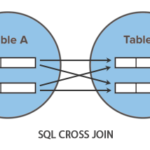In the modern world of data management, businesses are constantly seeking innovative ways to store, manage, and analyze vast amounts of information. Among the various solutions available, the concept of a data lake has emerged as a powerful and flexible option. A data lake is a large repository that allows organizations to store structured, semi-structured, and unstructured data at any scale. This article explores what a data lake is within the context of databases, its key features, benefits, and how it differs from traditional data storage systems.
The Basics of Data Lakes
A data lake is essentially a centralized repository that enables the storage of all types of data in their native formats. Unlike traditional databases that require data to be structured and organized before storage, data lakes can accommodate data from multiple sources without the need for extensive preprocessing. This flexibility allows businesses to capture data in its raw form, making it available for analysis at any time. The core idea behind a data lake is to store data as-is, which provides the agility to analyze and use data in a variety of ways.
Key Features of Data Lakes
One of the defining features of a data lake is its ability to handle large volumes of data. Data lakes are designed to scale out as data grows, making them suitable for organizations that need to manage vast amounts of information. Another important feature is schema-on-read, which allows data to be stored without a predefined schema and structured only when read. This approach contrasts with schema-on-write in traditional databases, where data must conform to a specific schema before storage. Additionally, data lakes support diverse data types, including logs, social media feeds, images, and videos, making them versatile for different analytical needs.
Benefits of Data Lakes
The flexibility and scalability of data lakes offer several significant benefits. Firstly, they enable organizations to consolidate all their data in one place, breaking down silos and facilitating comprehensive analytics. This consolidation leads to more accurate and holistic insights, as data from various sources can be analyzed together. Secondly, data lakes support advanced analytics and machine learning by providing access to raw data, which is crucial for building predictive models and uncovering hidden patterns. Moreover, data lakes can be cost-effective, as they use commodity hardware and cloud storage solutions, reducing the overall cost of data management.
Data Lakes vs. Traditional Databases
Understanding the differences between data lakes and traditional databases is essential for choosing the right data management strategy. Traditional databases, such as relational databases, are optimized for transactional operations and require data to be structured and indexed for fast retrieval. They are best suited for applications that need to manage structured data with complex relationships. In contrast, data lakes excel in storing and processing large volumes of diverse data types, making them ideal for big data analytics. While databases enforce strict data integrity and support ACID (Atomicity, Consistency, Isolation, Durability) transactions, data lakes prioritize flexibility and scalability, allowing for rapid data ingestion and exploration.
Implementing a Data Lake
Implementing a data lake requires careful planning and consideration of various factors to ensure its success. Organizations must choose the right technology stack, which typically includes cloud storage services, data ingestion tools, and analytics platforms. Popular cloud providers such as Amazon Web Services (AWS), Microsoft Azure, and Google Cloud offer comprehensive data lake solutions that integrate seamlessly with other data management tools. Additionally, governance and security are crucial aspects of a data lake implementation. Establishing clear data governance policies, including data access controls, metadata management, and compliance measures, helps maintain data quality and protects sensitive information. By addressing these factors, businesses can build a robust data lake that supports their analytical needs.
Future Trends in Data Lakes
As technology evolves, data lakes are poised to become even more integral to data management strategies. One emerging trend is the integration of artificial intelligence (AI) and machine learning (ML) capabilities directly within data lakes. This integration enables real-time analytics and automated decision-making processes, driving more immediate and actionable insights. Another trend is the concept of a data lakehouse, which combines the best aspects of data lakes and data warehouses to offer both high-performance analytics and the flexibility of raw data storage. Furthermore, advancements in data interoperability and standardization will enhance the ability to share and analyze data across different platforms and systems. As these trends continue to develop, data lakes will provide even greater value, empowering organizations to leverage their data assets more effectively.
Understanding Data Lakes
In summary, a data lake is a powerful tool for modern data management, offering the ability to store vast amounts of diverse data in its raw form. Its flexibility, scalability, and support for advanced analytics make it an attractive option for organizations looking to harness the full potential of their data. By understanding the key features and benefits of data lakes, businesses can make informed decisions on how to integrate them into their data management strategies. As data continues to grow in volume and complexity, data lakes will play an increasingly vital role in enabling data-driven insights and innovation.

